Islamabad
Islamabad
Islamabad
اسلام آباد
| |
|---|---|
|
Clockwise from left: Pakistan Monument, Blue Area is the commercial centre of the city, National Assembly of Pakistan, Faisal Mosque, Margalla Hills National Park
| |
| Nickname(s):
Isloo, The Green City
| |
| Coordinates: 33°41′35″N 73°03′50″ECoordinates: 33°41′35″N 73°03′50″E | |
| Country | |
| Territory | Islamabad Capital Territory |
| Founded | 1960 |
| Constituencies | NA-52, NA 53, NA-54[1] |
| Government | |
| • Type | Parliamentary democratic republic |
| • Governing body | ICT Administration, and Capital Development Authority (CDA) |
| • Mayor | Sheikh Ansar Aziz[2] |
| • Chief Commissioner | Amer Ali Ahmed |
| • Dupty Commissioner | Muhammad Hamza Shafqaat |
| • Chairman CDA | Amer Ali Ahmed[3] |
| Area | |
| • City | 220 km2 (80 sq mi) |
| • Urban | 220.15 km2 (85.00 sq mi) |
| • Metro | 906.5 km2 (350.0 sq mi) |
| Highest elevation | 620 m (2,000 ft) |
| Lowest elevation | 490 m (1,610 ft) |
| Population
(2017 Census)[6]
| |
| • City | 1,014,825 |
| • Density | 2,089/km2 (5,410/sq mi) |
| • Urban | 1,014,825 |
| • Urban density | 4,609/km2 (11,940/sq mi) |
| • Rural | 991,747 |
| • Metro | 7,412,205[5] (includes Rawalpindi) |
| Demonym(s) | Islamabadi or Islamabadis |
| Time zone | UTC+05:00 (PKT) |
| Postcode |
44000
|
| Area code(s) | 051 |
| HDI 2018 | 0.678 |
| HDI Category | Medium |
| Notable sports teams | Islamabad United, Islamabad Jinns |
| Website | www |
Islamabad (/ɪsˈlɑːməˌbɑːd/; Urdu: اسلام آباد, Islāmābād) is the capital city of Pakistan, and is federally administered as part of the Islamabad Capital Territory. Islamabad is the ninth largest city in Pakistan, while the larger Islamabad-Rawalpindi metropolitan area is the country's fourth largest with a population of about 7.4 million.[5]
Built as a planned city in the 1960s to replace Karachi as Pakistan's capital, Islamabad is noted for its high standards of living,[8] safety,[9] and abundant greenery.[10] The city is the political seat of Pakistan and local government setup is run by the Islamabad Metropolitan Corporation, supported by the Capital Development Authority (CDA).
Islamabad is located in the Pothohar Plateau in the northeastern part of the country, between Rawalpindi District and the Margalla Hills National Park to the north. The region has historically been a part of the crossroads of Punjab and Khyber Pakhtunkhwa with the Margalla Pass acting as the gateway between the two regions.[11]
The city's master-plan, designed by Greek architect Constantinos Apostolou Doxiadis, divides the city into eight zones, including administrative, diplomatic enclave, residential areas, educational sectors, industrial sectors, commercial areas, and rural and green areas. The city is known for the presence of several parks and forests, including the Margalla Hills National Park and Shakarparian Park.[12] The city is home to several landmarks, including the Faisal Mosque, the largest mosque in South Asia[13] and the fourth largest in the world. Other landmarks include the Pakistan's National Monument and Democracy Square.[14][15][16]
Islamabad is a gamma-global city;[17] it is categorised as Medium on the Human Development Index, with an HDI of 0.678, the highest in the country. The city has the highest cost of living in Pakistan, and its population is dominated by middle and upper middle class citizens.[8][18] Being an expensive city, the prices of most of fruits, vegetable and poultry items increased in Islamabad during the year 2015-2020[19]
The city is home to twenty universities, including the Bahria University, Quaid-e-Azam University, PIEAS, COMSATS Institute of Information Technology and NUST.[20] The city is one of the safest in Pakistan, and has an expansive surveillance system with 1,900 CCTV cameras.[9][21]
Etymology
The name of the city, Islamabad, is derived from two words, Islam and abad, meaning "City of Islam". Islam is an Urdu word which refers to the religion of Islam and -abad is a Persian suffix indicating an inhabited place or city.[22]
History
Early history
Islamabad Capital Territory, located on the Pothohar Plateau of the Punjab region, is considered one of the earliest sites of human settlement in Asia.[23] Some of the earliest Stone Age artefacts in the world have been found on the plateau, dating from 100,000 to 500,000 years ago. Rudimentary stones recovered from the terraces of the Soan River testify to the endeavours of early man in the inter-glacial period.[24] Items of pottery and utensils dating back to prehistory have been found.[25]
Excavations by Dr. Abdul Ghafoor Lone reveal evidence of a prehistoric culture in the area. Relics and human skulls have been found dating back to 5000 BCE that indicate the region was home to Neolithic peoples who settled on the banks of the Swaan River,[23] and who later developed small communities in the region around 3000 BCE.[24][26]
The Indus Valley Civilization flourished in the region between the 23rd and 18th centuries BCE. Later the area was an early settlement of the Aryan community which migrated into the region from Central Asia.[23] Many great armies such as those of Zahiruddin Babur, Genghis Khan, Timur and Ahmad Shah Durrani crossed the region during their invasions of the Indian Subcontinent.[23] In 2015–16, the Federal Department of Archaeology and Museums, with the financial support of National Fund for Cultural Heritage, carried out initial archaeological excavations in which unearthed the remains of a Buddhist stupa at Ban Faqiran, near the Shah Allah Ditta caves, which was dated to the 2nd to the 5th century CE.[27]
Construction and development
When Pakistan gained independence in 1947, the southern port city of Karachi was its first national capital. In the 1960s, Islamabad was constructed as a forward capital for several reasons.[28] Traditionally, development in Pakistan was focused on the colonial centre of Karachi – a tradition which President Ayub Khan wished to abolish. Karachi was also located at the southern end of the country, and exposed to attacks from the Arabian Sea. Pakistan needed a capital that was easily accessible from all parts of the country.[29][30] Karachi, a business centre, was also considered unsuitable partly because of intervention of business interests in government affairs.[31] The newly selected location of Islamabad was closer to the army headquarters in Rawalpindi and the disputed territory of Kashmir in the north.[23]
In 1958, a commission was constituted to select a suitable site for the national capital with particular emphasis on location, climate, logistics, and defence requirements, along with other attributes. After extensive study, research, and a thorough review of potential sites, the commission recommended the area northeast of Rawalpindi in 1959.[29][32] A Greek firm of architects, led by Konstantinos Apostolos Doxiadis, designed the master plan of the city based on a grid plan which was triangular in shape with its apex towards the Margalla Hills.[33] The capital was not moved directly from Karachi to Islamabad; it was first shifted temporarily to Rawalpindi in the early 60s, and then to Islamabad when essential development work was completed in 1966.[34]
Recent history
Islamabad has attracted people from all over Pakistan, making it one of the most cosmopolitan and urbanised cities of Pakistan.[35] As the capital city it has hosted a number of important meetings, such as the South Asian Association for Regional Cooperation summit in 2004.[36]
In October 2005, the city suffered damage due to the 2005 Kashmir earthquake which had a magnitude of 7.6.[37] Islamabad has experienced a series of terrorist incidents including the July 2007 Siege of Lal Masjid (Red Mosque), the June 2008 Danish embassy bombing, and the September 2008 Marriott bombing.[38] In 2011, four terrorism incidents occurred in the city, killing four people, including the murder of the Punjab Governor Salmaan Taseer.[39]
Construction of the Rawalpindi-Islamabad Metrobus, the region's first mass transit line, began in February 2014, and was completed in March 2015. The Rawalpindi Development Authority built the project at a cost of approximately Rs 24 billion, which was shared by both the Federal government and the provincial government of Punjab.[40]
Geography and climate
Islamabad is located at 33.43°N 73.04°E at the northern edge of the Pothohar Plateau and at the foot of the Margalla Hills in Islamabad Capital Territory. Its elevation is 540 metres (1,770 ft).[41][42] The modern capital and the ancient Gakhar city of Rawalpindi form a conurbation, and are commonly referred to as the Twin Cities.[43][31]
To the northeast of the city lies the colonial era hill station of Murree, and to the north lies the Haripur District of Khyber Pakhtunkhwa. Kahuta lies on the southeast, Taxila, Wah Cantt, and Attock District to the northwest, Gujar Khan, Rawat, and Mandrah on the southeast, and the metropolis of Rawalpindi to the south and southwest. Islamabad is located 120 kilometres (75 mi) SSW of Muzaffarabad, 185 kilometres (115 mi) east of Peshawar, 295 kilometres (183 mi) NNW of Lahore, and 300 kilometres (190 mi) WSW of Srinagar, the capital of the Indian territory of Jammu and Kashmir.
The city of Islamabad expanses an area of 906 square kilometres (350 sq mi).[44] A further 2,717 square kilometres (1,049 sq mi) area is known as the Specified Area, with the Margala Hills in the north and northeast. The southern portion of the city is an undulating plain. It is drained by the Kurang River, on which the Rawal Dam is located.[45]
Climate
Islamabad has a humid subtropical climate (Köppen: Cwa), with five seasons: Winter (November–February), Spring (March and April), Summer (May and June), Rainy Monsoon (July and August) and Autumn (September and October). The hottest month is June, where average highs routinely exceed 38 °C (100.4 °F). The wettest month is July, with heavy rainfalls and evening thunderstorms with the possibility of cloudburst and flooding. The coolest month is January.
Islamabad's micro-climate is regulated by three artificial reservoirs: Rawal, Simli, and Khanpur Dam. The latter is located on the Haro River near the town of Khanpur, about 40 kilometres (25 mi) from Islamabad. Simli Dam is 30 kilometres (19 mi) north of Islamabad. 220 acres (89 ha) of the city consists of Margalla Hills National Park. Loi Bher Forest is situated along the Islamabad Highway, covering an area of 1,087 acres (440 ha).[46] The highest monthly rainfall of 743.3 mm (29.26 in) was recorded during July 1995.[47] Winters generally feature dense fog in the mornings and sunny afternoons. In the city, temperatures stay mild, with snowfall over the higher-elevation points on nearby hill stations, notably Murree and Nathia Gali. The temperatures range from 13 °C (55 °F) in January to 38 °C (100 °F) in June. The highest recorded temperature was 46.6 °C (115.9 °F) on 23 June 2005 while the lowest temperature was −6 °C (21.2 °F) on 17 January 1967.[48][49] The city has recorded snowfall. On 23 July 2001, Islamabad received a record-breaking 620 mm (24 in) of rainfall in just 10 hours. It was the heaviest rainfall in Islamabad in the past 100 years and the highest rainfall in 24 hours as well.[50][51]
| hideClimate data for Islamabad (1961–1990) | |||||||||||||
|---|---|---|---|---|---|---|---|---|---|---|---|---|---|
| Month | Jan | Feb | Mar | Apr | May | Jun | Jul | Aug | Sep | Oct | Nov | Dec | Year |
| Record high °C (°F) | 30.1 (86.2) | 30.0 (86.0) | 34.4 (93.9) | 40.6 (105.1) | 45.6 (114.1) | 46.6 (115.9) | 45.0 (113.0) | 42.0 (107.6) | 38.1 (100.6) | 37.8 (100.0) | 32.2 (90.0) | 28.3 (82.9) | 46.6 (115.9) |
| Average high °C (°F) | 17.7 (63.9) | 19.1 (66.4) | 23.9 (75.0) | 30.1 (86.2) | 35.3 (95.5) | 38.7 (101.7) | 35.0 (95.0) | 33.4 (92.1) | 33.5 (92.3) | 30.9 (87.6) | 25.4 (77.7) | 19.7 (67.5) | 28.6 (83.5) |
| Daily mean °C (°F) | 10.1 (50.2) | 12.1 (53.8) | 16.9 (62.4) | 22.6 (72.7) | 27.5 (81.5) | 31.2 (88.2) | 29.7 (85.5) | 28.5 (83.3) | 27.0 (80.6) | 22.4 (72.3) | 16.5 (61.7) | 11.6 (52.9) | 21.3 (70.3) |
| Average low °C (°F) | 2.6 (36.7) | 5.1 (41.2) | 9.9 (49.8) | 15.0 (59.0) | 19.7 (67.5) | 23.7 (74.7) | 24.3 (75.7) | 23.5 (74.3) | 20.6 (69.1) | 13.9 (57.0) | 7.5 (45.5) | 3.4 (38.1) | 14.1 (57.4) |
| Record low °C (°F) | −6.1 (21.0) | −2.2 (28.0) | −0.3 (31.5) | 5.1 (41.2) | 10.5 (50.9) | 15.0 (59.0) | 17.8 (64.0) | 17.0 (62.6) | 13.3 (55.9) | 5.7 (42.3) | −0.6 (30.9) | −4.1 (24.6) | −6.1 (21.0) |
| Average precipitation mm (inches) | 56.1 (2.21) | 73.5 (2.89) | 89.8 (3.54) | 61.8 (2.43) | 39.2 (1.54) | 62.2 (2.45) | 267.0 (10.51) | 309.9 (12.20) | 98.2 (3.87) | 29.3 (1.15) | 17.8 (0.70) | 37.3 (1.47) | 1,142.1 (44.96) |
| Mean monthly sunshine hours | 195.7 | 187.1 | 202.3 | 252.4 | 311.9 | 300.1 | 264.4 | 250.7 | 262.2 | 275.5 | 247.9 | 195.6 | 2,945.8 |
| Source #1: NOAA (normals)[52] | |||||||||||||
| Source #2: PMD (extremes)[53] | |||||||||||||
Cityscape
| Zones in Islamabad | ||
|---|---|---|
| Zone | Area | |
| acres | km2 | |
| I | 54,958.25 | 222.4081 |
| II | 9,804.92 | 39.6791 |
| III | 50,393.01 | 203.9333 |
| IV | 69,814.35 | 282.5287 |
| V | 39,029.45 | 157.9466 |
| Source: | Lahore Real Estate[54] | |
Civic administration
The Islamabad Capital Territory (ICT) Administration, generally known as ICT Administration or Islamabad Administration, is the civil administration as well as main law and order agency of the Federal Capital.
The local government authority of the city is the Islamabad Metropolitan Corporation (IMC) with some help from Capital Development Authority (CDA), which oversees the planning, development, construction, and administration of the city.[55][56] Islamabad Capital Territory is divided into eight zones: Administrative Zone, Commercial District, Educational Sector, Industrial Sector, Diplomatic Enclave, Residential Areas, Rural Areas and Green Area.[57] Islamabad city is divided into five major zones: Zone I, Zone II, Zone III, Zone IV, and Zone V. Out of these, Zone IV is the largest in area.[54] Zone I consists mainly of all the developed residential sectors while Zone II consists of the under-developed residential sectors. Each residential sector is identified by a letter of the alphabet and a number, and covers an area of approximately 2 km × 2 km (11⁄4 mi × 11⁄4 mi). The sectors are lettered from A to I, and each sector is divided into four numbered sub-sectors.[58]
Sectors
Series A, B, and C are still underdeveloped. The D series has seven sectors (D-11 to D-17),[54] of which only sector D-12 is completely developed. This series is located at the foot of Margalla Hills.[57] The E Sectors are named from E-7 to E-17.[54] Many foreigners and diplomatic personnel are housed in these sectors.[57] In the revised Master Plan of the city, CDA has decided to develop a park on the pattern of Fatima Jinnah Park in sector E-14. Sectors E-8 and E-9 contain the campuses of Bahria University, Air University, and the National Defence University.[59][60][61] The F and G series contains the most developed sectors. F series contains sectors F-5 to F-17; some sectors are still under-developed.[54] F-5 is an important sector for the software industry in Islamabad, as the two software technology parks are located here. The entire F-9 sector is covered with Fatima Jinnah Park. The Centaurus complex is a major landmark of the F-8 sector.[57] G sectors are numbered G-5 through G-17.[54] Some important places include the Jinnah Convention Centre and Serena Hotel in G-5, the Red Mosque in G-6, the Pakistan Institute of Medical Sciences, the largest medical complex in the capital, located in G-8,[57] and the Karachi Company shopping center in G-9.
The H sectors are numbered H-8 through H-17.[54] The H sectors are mostly dedicated to educational and health institutions. National University of Sciences and Technology covers a major portion of sector H-12.[57] The I sectors are numbered from I-8 to I-18. With the exception of I-8, which is a well-developed residential area, these sectors are primarily part of the industrial zone. Currently two sub-sectors of I-9 and one sub-sector of I-10 are used as industrial areas. CDA is planning to set up Islamabad Railway Station in Sector I-18 and Industrial City in sector I-17.[57] Zone III consists primarily of the Margalla Hills and Margalla Hills National Park. Rawal Lake is in this zone. Zone IV and V consist of Islamabad Park, and rural areas of the city. The Soan River flows into the city through Zone V.[54]
Islamabad/Rawalpindi Metropolitan Area
When the master plan for Islamabad was drawn up in 1960, Islamabad and Rawalpindi, along with the adjoining areas, was to be integrated to form a large metropolitan area called Islamabad/Rawalpindi Metropolitan Area. The area would consist of the developing Islamabad, the old colonial cantonment city of Rawalpindi, and Margalla Hills National Park, including surrounding rural areas.[62][63] However, Islamabad city is part of the Islamabad Capital Territory, while Rawalpindi is part of Rawalpindi District, which is part of province of Punjab .[64]
Initially, it was proposed that the three areas would be connected by four major highways: Murree Highway, Islamabad Highway, Soan Highway, and Capital Highway. However, to date only two highways have been constructed: Kashmir Highway (the former Murree Highway) and Islamabad Highway.[63] Plans of constructing Margalla Avenue are also underway.[65] Islamabad is the hub all the governmental activities while Rawalpindi is the centre of all industrial, commercial, and military activities. The two cities are considered sister cities and are highly interdependent.[62]





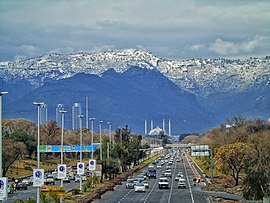
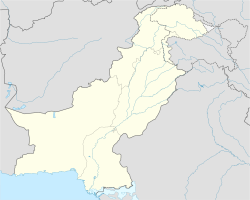




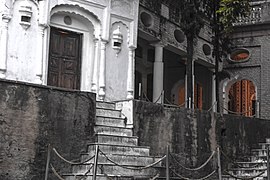






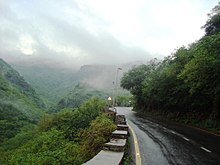




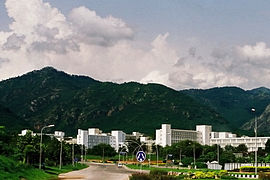


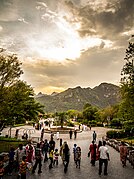




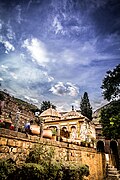
Comments
Post a Comment